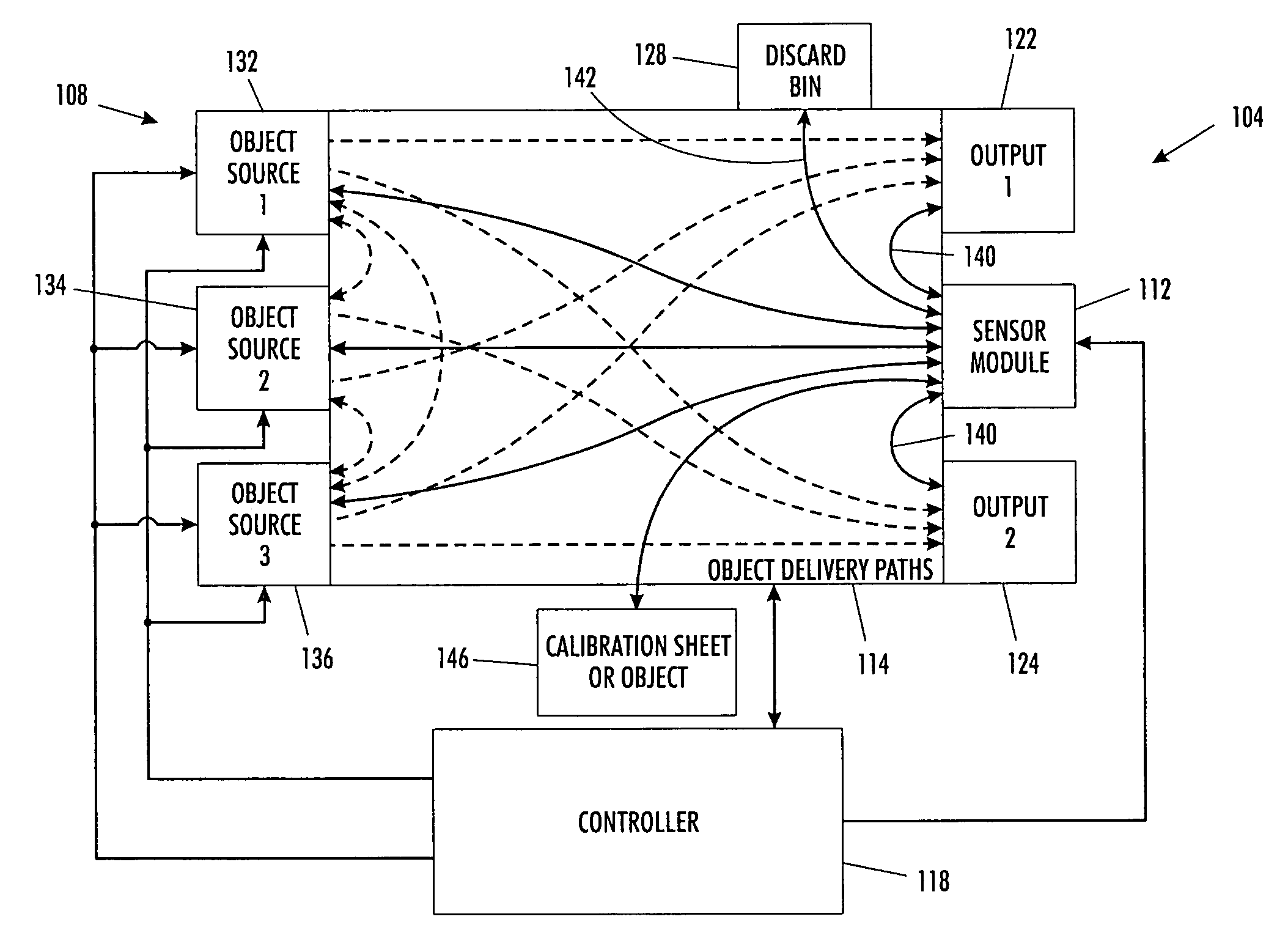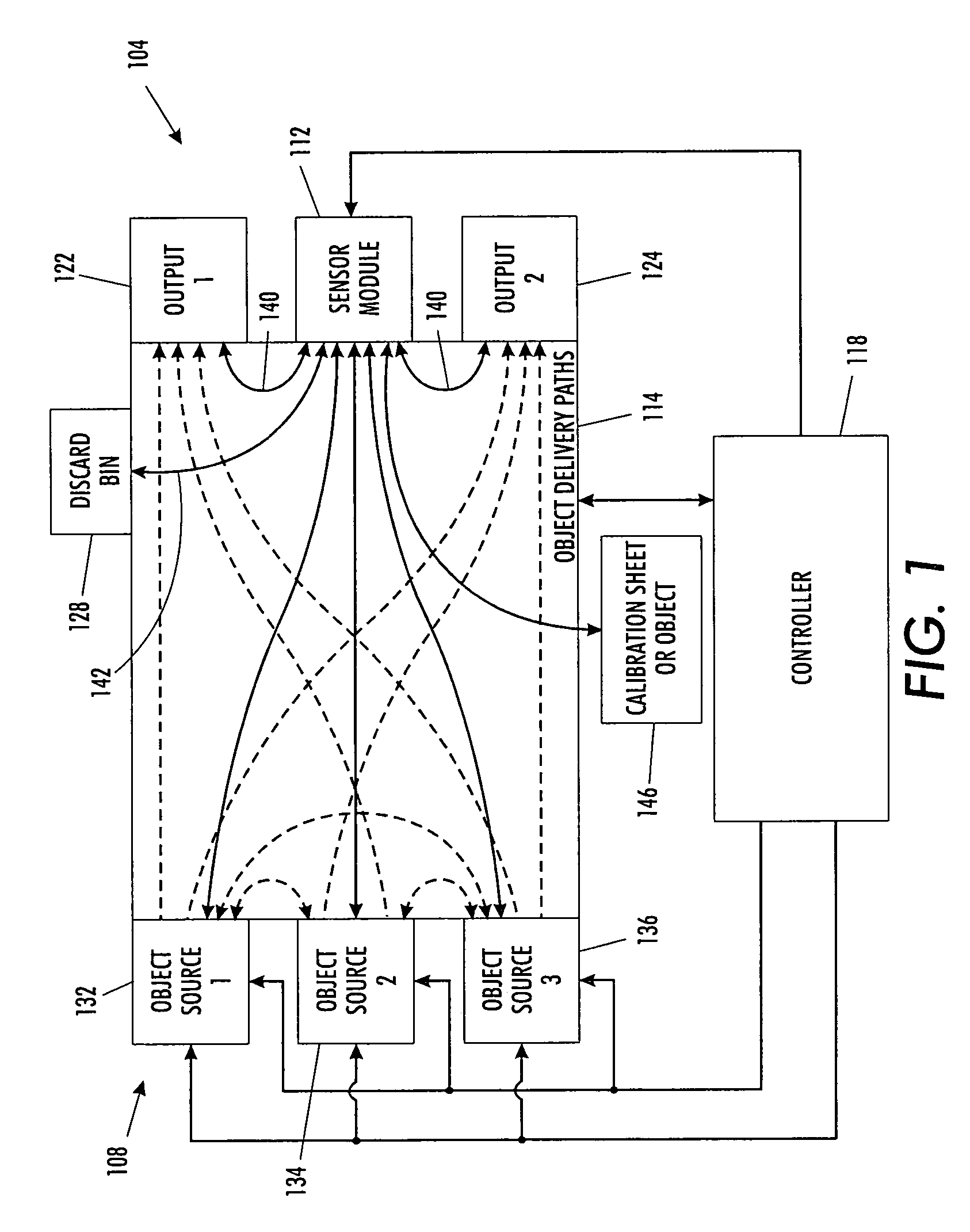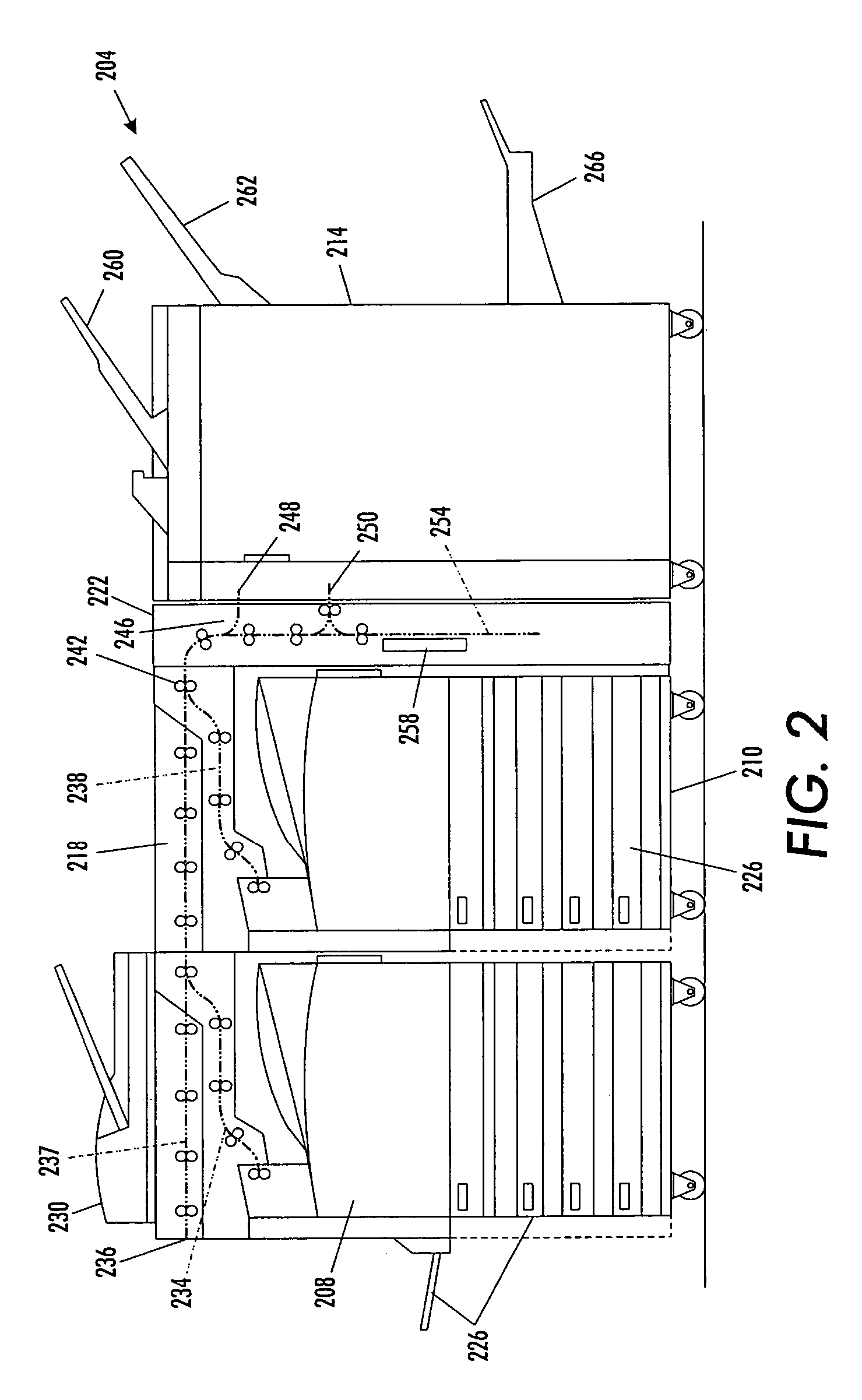Multiple object sources controlled and/or selected based on a common sensor
a sensor and object technology, applied in the field of multi-object source controlled and/or selected based on a common sensor, can solve the problems of affecting the perception of consistency or quality issues, and the slight variation of the registration, so as to achieve the effect of improving the quality of the object sour
- Summary
- Abstract
- Description
- Claims
- Application Information
AI Technical Summary
Benefits of technology
Problems solved by technology
Method used
Image
Examples
Embodiment Construction
[0022]Referring to FIG. 1, a system 104 for handling objects includes a plurality 108 of object sources, a sensor module 112, or set of sensing elements, and a plurality of object delivery paths 114. A controller 118 is operative to orchestrate or control sensing or diagnostic sessions. The system 104 may include main outputs, such as a first output 122 and a second output 124. A third output, may be designated as a discard bin 128.
[0023]In the exemplary system 104, the plurality of object sources includes a first object source 132, a second object source 134 and a third object source 136. The object sources 108 can be any object sources wherein one or more aspects of objects delivered by the object sources 108 are beneficially sensed on an occasional or periodic basis in order to establish, adjust, react to or compensate for aspects of the object delivery, production, generation, presentment or handling process of the system 104.
[0024]For example, where the exemplary system 104 is ...
PUM
 Login to View More
Login to View More Abstract
Description
Claims
Application Information
 Login to View More
Login to View More - R&D
- Intellectual Property
- Life Sciences
- Materials
- Tech Scout
- Unparalleled Data Quality
- Higher Quality Content
- 60% Fewer Hallucinations
Browse by: Latest US Patents, China's latest patents, Technical Efficacy Thesaurus, Application Domain, Technology Topic, Popular Technical Reports.
© 2025 PatSnap. All rights reserved.Legal|Privacy policy|Modern Slavery Act Transparency Statement|Sitemap|About US| Contact US: help@patsnap.com



